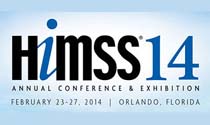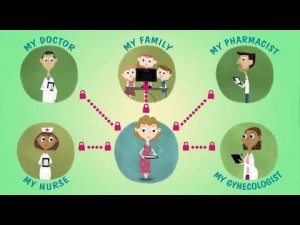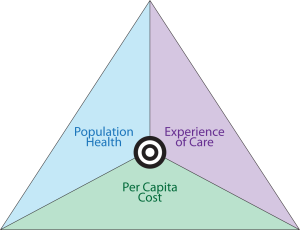 This is the first of four posts that are written for the HIMSS 2014 Blog Carnival. The theme, provided by HIMSS (the Healthcare Information and Management Systems Society): “Why Health IT Matters to Consumers.” You’ll note the title here has been purposefully changed.
This is the first of four posts that are written for the HIMSS 2014 Blog Carnival. The theme, provided by HIMSS (the Healthcare Information and Management Systems Society): “Why Health IT Matters to Consumers.” You’ll note the title here has been purposefully changed.
Health IT “should” matter to consumers. Since George Bush declared in 2004 that within 10 years’ time, U.S. health citizens would each have an electronic medical record, there’s been as more bipartisan support inside the Beltway for EHRs than possibly for any other issue in Congress. The American Recovery & Reinvestment Act of 2009 (ARRA), aka the Stimulus Bill, included funding for the HITECH Act which has provided and paid for incentives to health care providers to adopt EHRs, nudging clinicians to effectively use these systems (“meaningfully”). Federal government funding has worked to attract buyers of health IT, and the health IT economy on the supply side has been growing.
That’s the supply side. As a health economist, I think in terms of markets. So to meet up with the supply side, I turn to the demand side. Assume that patients are the ultimate consumers of EHRs. (This is a bold assumption against which I can make many cogent arguments, but for the sake discussion, let’s go with it).
 In the context of health providers adopting EHRs on the supply side, where are the EHR “consumers?” Are they lining up in their health providers’ offices, demanding copies of their digital health files, downloading their data via BlueButton, or receiving PDFs of their PHI via email?
In the context of health providers adopting EHRs on the supply side, where are the EHR “consumers?” Are they lining up in their health providers’ offices, demanding copies of their digital health files, downloading their data via BlueButton, or receiving PDFs of their PHI via email?
Not that I’ve heard, and I am steeped in the convergence of health + technology + people every day.
There are several metaphors that are apropos here. You know the one, if a tree falls in the forest and nobody hears it, did it really make a sound? Or, the Field of Dreams Effect – that if you build ‘it,’ will ‘they’ come?
As we convene for HIMSS14, the largest meeting in the world focusing on health information and communications technologies, we must get real about how to connect the consumer, patient and caregiver to the supply side of their health information.
This should matter to consumers, and it should matter very much to health providers, payers, health plan sponsors, regulators, and policymakers, as well, because:
- More activated patients cost the health system less money, Dr. Judith Hibbard has learned through her research on patient activation.
- People in the U.S. will increasingly be enrolled in high-deductible health plans that will require them to note only be health literate in terms of making smart clinical choices, but also health financial literate. Understanding how to effectively make these choices will positive impact providers, whose CFOs must pay intense scrutiny to the patient receivables line item.
- Providers’ shift toward more value-based and accountable care financing models will need to embrace the patient as a member of the health team, as more care will (and should) be delivered at home and where the person “lives, works, and plays.” This is already a key strategy for hospitals managing readmissions under the Affordable Care Act.
These are hard financial dollars that can accrue when people (patients, consumers, caregivers) “own,” understand, and use their personal health data.
 These rationale are bigger than meeting Meaningful Use criteria. Peoples’ involvement in embracing their personal health information can move people to the center of the U.S. health delivery system, with providers and health plans becoming more accountable as people take on the mantle of becoming health care consumers. This then drives the demand for transparency and accountability to people. We can manage what we can measure, but without the ability to do so, our costs will continue to increase, and our national economy will continue to be penalized by waste in an unsustainable health system. That will keep the elusive Triple Aim at bay.
These rationale are bigger than meeting Meaningful Use criteria. Peoples’ involvement in embracing their personal health information can move people to the center of the U.S. health delivery system, with providers and health plans becoming more accountable as people take on the mantle of becoming health care consumers. This then drives the demand for transparency and accountability to people. We can manage what we can measure, but without the ability to do so, our costs will continue to increase, and our national economy will continue to be penalized by waste in an unsustainable health system. That will keep the elusive Triple Aim at bay.
Notwithstanding the $27 billion HITECH investment and the hard work of health providers implementing new systems, day by day, disruptive workflow and tearing out their proverbial hair, consumers remain largely unaware of their rights to their PHI, and the benefits of engaging with their health numbers.
ONC created this video in 2012 to drive awareness among U.S. health citizens – people – about health IT.
This informative resource hasn’t gone viral the way it should have. Let’s get the ball rolling by socializing this resource among friends and family.
Health IT should matter to consumers. We in the field must work harder to bolster digital health and health IT literacy. It’s not a technology problem anymore. It’s a social marketing challenge.




 Thank you FeedSpot for
Thank you FeedSpot for